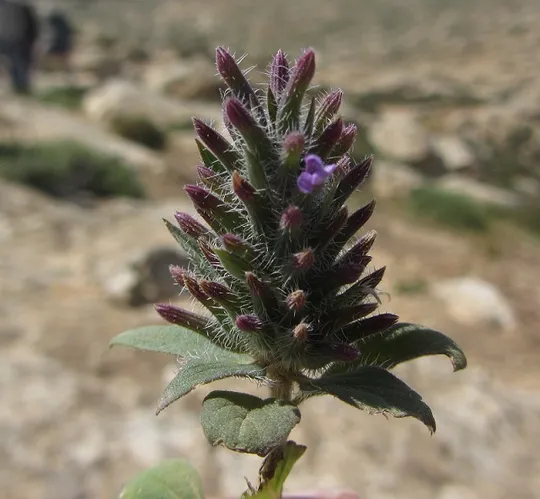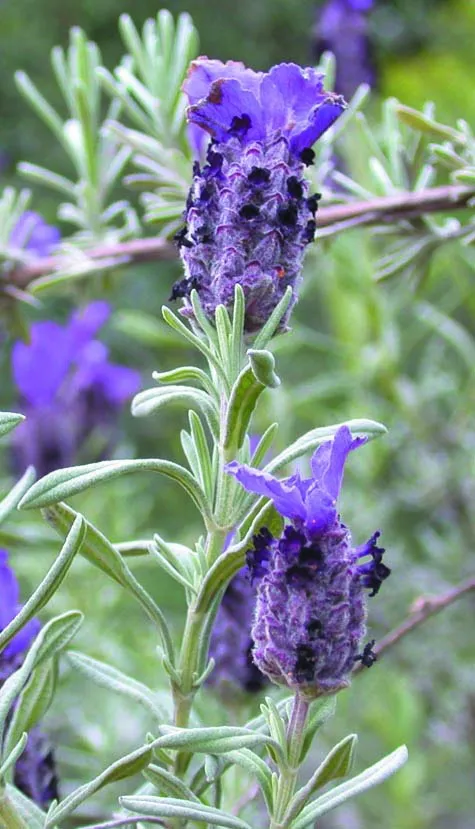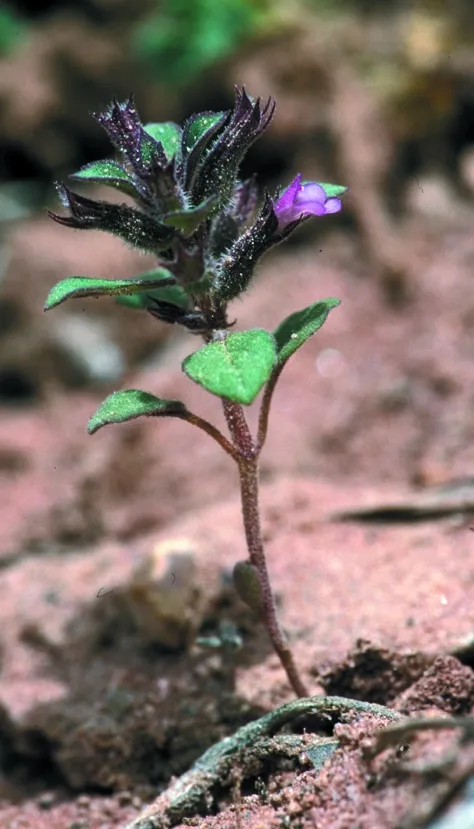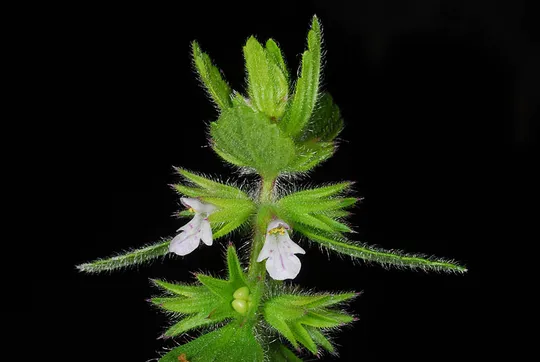Ramon Majoram
Origanum ramonense
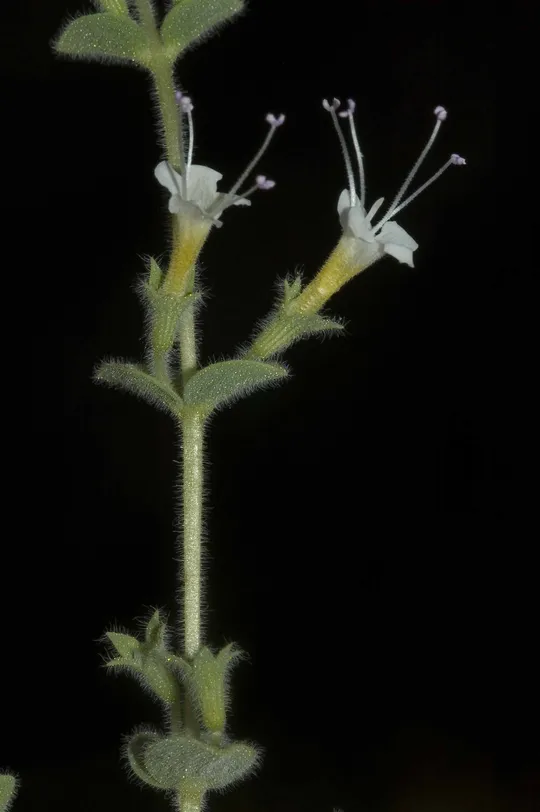
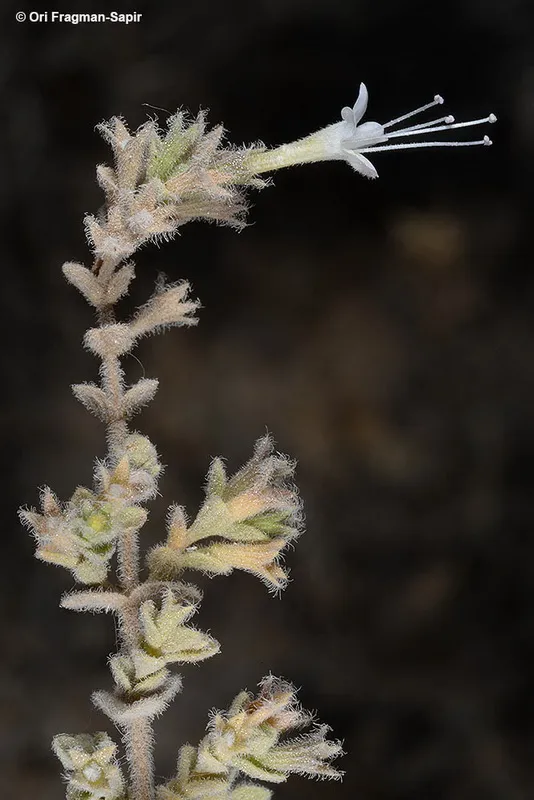
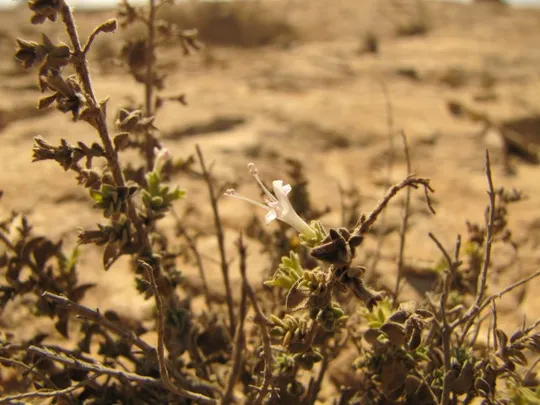
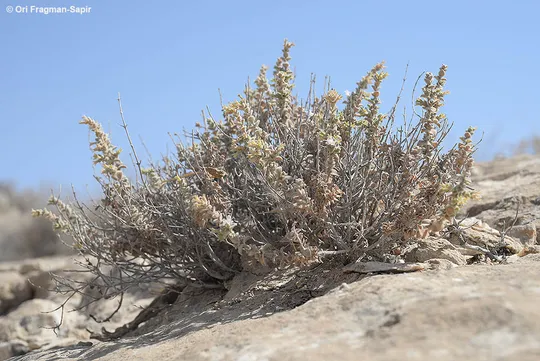
Oxystelma esculentum is climbing vine, woody at is base, that sprouts long, thin stems. Some wind themselves around other plants or around their own branches. The young branches are green and covered with thin hairs that shed over time. The stems and leaves contain a milky sap. Leaves are long and narrow, with sharp edges, 7-10 cm long and 0.5 to cm across, with short petioles. O. esculentum flowers in the spring and summer, sometimes until December, depending on the moisture in the root zone. The inflorescences are carried on a joint stalk, with 2-5 flowers arranged in a sparse umbel. The relatively large (1.4-2 cm across) beautiful flowers are characteristic of the family. The short green calyx has oval lobes. The corolla has fused petals with five pinkish triangular lobes with purple veins; at its center is a corona composed of five swollen protuberances. The fruit is a thin follicle 3-5 cm long. Seeds have well-developed tufts of hairs, easily carried over long distances by the wind (up to many kilometers), but only a small part reach suitable habitats in oases.
Grows exclusively in the Negev Highlands at altitudes above 880 meters, between Mount Arikha in the western Negev Highlands, Mitspe Ramon and to Mount Lots in the eastern Mount Ramon.
Rock pockets in limestone and chert, mostly on rock expanses and terraced cliffs. Also in rocky wadi beds in the Negev Highlands in altitudes above 880 m.
Origanum ramonense is a vicarious species closely related to Origanum dayi. They grow in the same habitat, but at altitudes above 900 meters Origanum ramonense replaces Origanum dayi (Arbel and Danin, 1998). According to Danin the two species differ in three main features: 1) the green plant organs are much more hairy in Origanum ramonense (in Origanum dayi the organs are almost completely smooth). 2) The flower is pale lilac and its bud is purple. 3) The corolla is shorter, 8-9 mm long compared to 11- 13 mm in Origanum dayi. on Mount Hebron and among the Negev Bedouins Origanum dayi is known as a fine herb for tea, and when mixed with olive oil is used as a medicine to cure coughs, breathing problems, abdominal pains and joint pains. Lately varieties of Origanum have been introduced in the Israeli herb industry as a commercial crop. Many of the species of Origanum (Oregano) are well-known herbs, including Origanum vulgare, a common herb in gardens and supermarkets. Origanum dayi is endemic to the Negev Highlands, and according to Danin (1998) its vicarious species grows on the island of Crete. It belongs to a group of Origanum species endemic to the Levant desert mountains (Sinai, Negev, Edom), which were isolated in the past from the main populations of the genus growing in the Mediterranean Basin today. They apparently penetrated into the desert during the ice age and underwent speciation during the Holocene dry period.
Danin, who studied this group, described five species (not including Origanum dayi that was already known from the north of the Negev),: Origanum isthmicum – endemic to Ǧebel Hillel in Northern Sinai, Origanum ramonense from the Negev Highlands and three species – Origanum petraeum, Origanum punonense and Origanum jordanicum from Edom in Jordan. (They could possibly be merged into a single taxon.) While Origanum dayi, Origanum ramonense and Origanum isthmicum are closely related vicarious species, Origanum petraeum is close to the Cretian Origanum species and not to the Origanum ramonense group.
• Most of the populations are included in Negev Highlands Reserve. IDF military training exercises and uncontrolled road building threaten the existence of several populations. Although the species is a popular herb, at this point there is no intensive collection that could endanger its populations.
• The distribution pattern is localized as a result of the rocky habitat. Suitable rock pockets are spread throughout the Negev Highlands in groups of patches, tens to hundreds of meters apart, which dictates the patchy distribution of Origanum.
• There is no change in population size.
• Protected in the Negev Highlands reserve.
Should be followed to ensure intensive harvesting of Origanum ramonense for spices and tea does not occur.
A dwarf shrub from the Negev Highlands whose glandular hairs that give off a sharp odor. Its Red status results from its relative rarity, from its endemism in the Negev Highlands and from its potential as a spice plant that could become a target for harvesting. This is one of the unique species in the mountainous desert ecosystem that contain within them the secrets of the climatic history of our region at the end of the Pleistocene and Holocene.
ארבל, א. ודנין, 1998. אטלס כרטא – החי והצומח של ארץ-ישראל. הוצאת כרטא, ירושלים.
Danin,A. 1967, A new Origanum from Israel, Origanum ramonense sp.n. Israel J. of Botany, 16,101-103.
Current Occupancy Map
| 1000 squre meter pixel | 5000 squre meter pixel | 10000 squre meter pixel | |
|---|---|---|---|
| number of observations | 0 | 0 | 0 |
| in total pixels | 0 | 0 | 0 |
| Family | Lamiaceae |
| Classification | On the endangered species list |
| Ecosystem | Desert Mountains |
| Chorotype | Endemic (Saharo-Arabian) |
| Conservation Site | Lots Cisterns near Mount Ramon, the Negev Highlands |
| Rarity |
1
4
6
|
|---|---|
| Vulnerability |
0
0
4
|
| Attractiveness |
0
1
4
|
| Endemism |
0
4
4
|
| Red number |
1
4.2
10
|
| Peripherality | 0 |
| IUCN category | DD EW EX LC CR EN VU NT |
| Threat Definition according to the red book | Endangered |
 Based on:
Based on:
